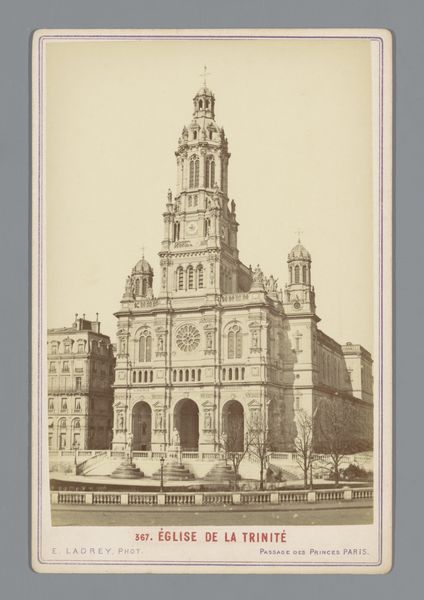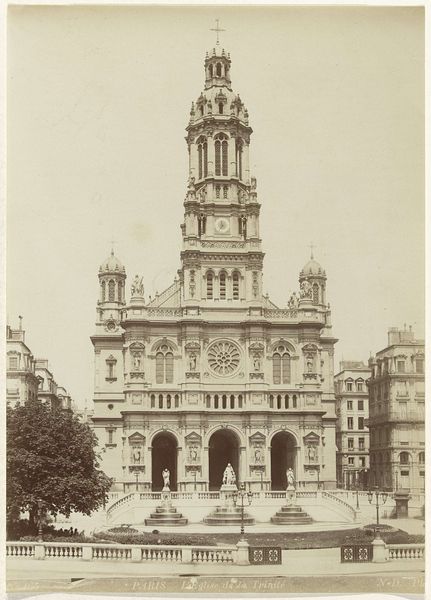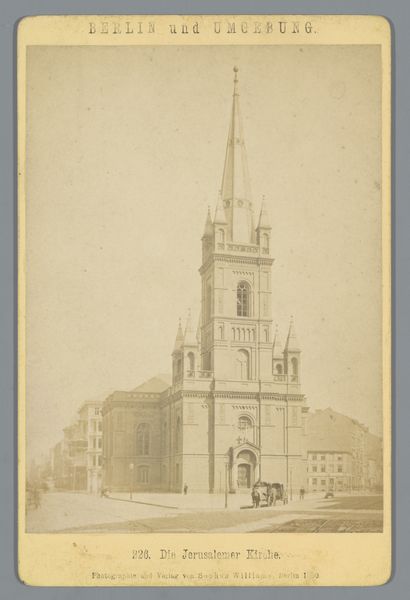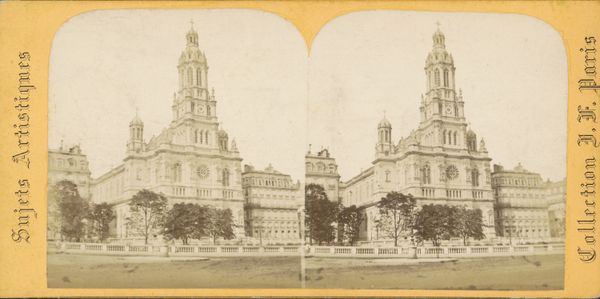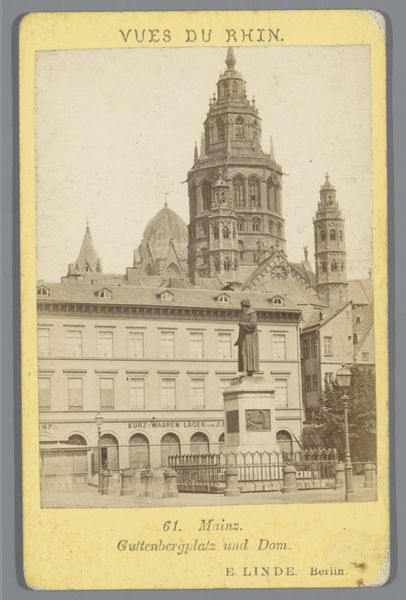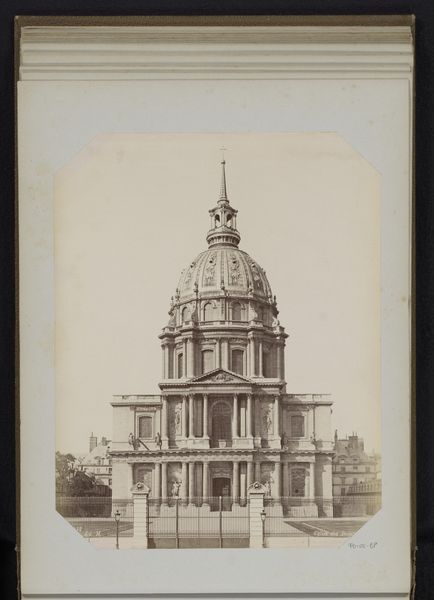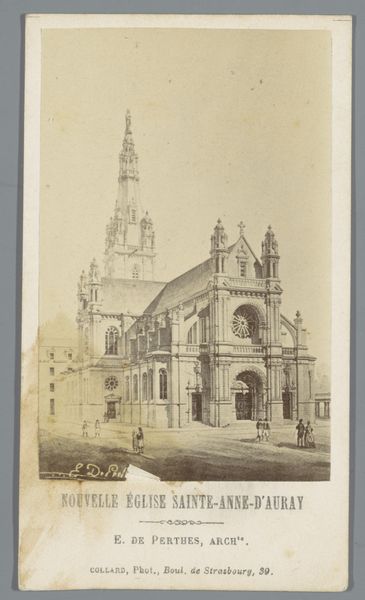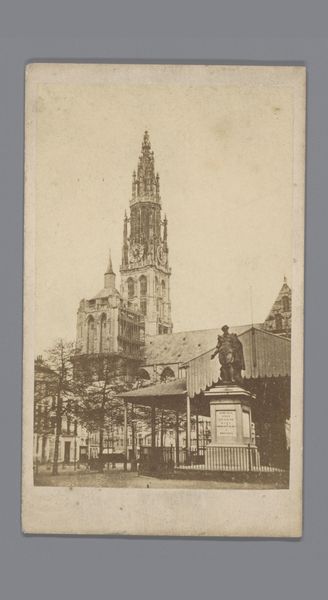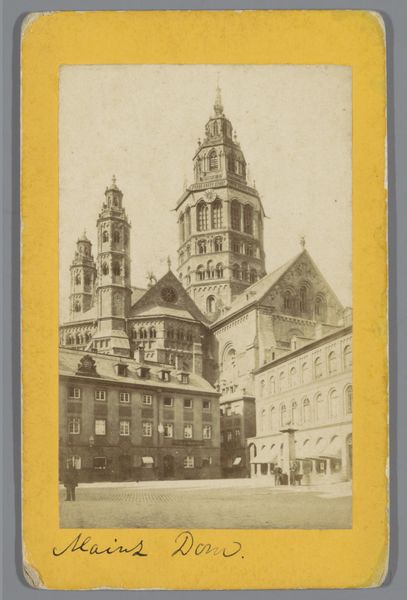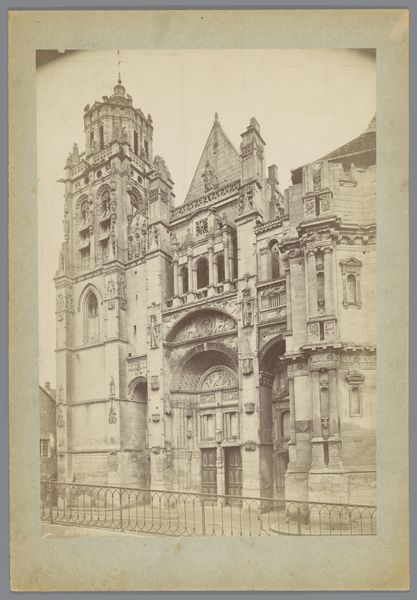
Exterieur van de Église de la Sainte-Trinité te Parijs c. 1865 - 1875
0:00
0:00
Dimensions: height 152 mm, width 97 mm
Copyright: Rijks Museum: Open Domain
Editor: This is a photograph titled "Exterior of the Église de la Sainte-Trinité in Paris," made sometime between 1865 and 1875 by Compagnie Photographique Debitte & Hervé. It’s a gelatin-silver print, giving it a kind of ethereal feel. What stands out to me is the sheer effort it must have taken to build such a grand structure; the photograph almost feels like a testament to human labor. What do you make of it? Curator: I think your observation about the labor involved is astute. As a materialist, I'm particularly interested in photography’s early role in documenting and, in a way, consuming architectural achievements. Consider the societal context: This photograph circulated during a period of intense urban development in Paris. These photographic prints were almost like commodities, weren't they, offering views of newly constructed or renovated spaces to a growing middle class. How do you see this impacting our experience of architecture in the city? Editor: That's an interesting way to look at it. It makes me think about how photography changed our relationship with physical space. Did these photographs change perceptions, reducing grand architecture into reproducible, sellable commodities? Curator: Exactly. The materiality of the gelatin-silver print itself—the chemicals, the paper, the process of development—becomes integral. This wasn’t just about recording; it was about creating a tangible object, replicable, able to be distributed. Consider the photographers themselves—Debitte & Hervé—their studio, their equipment, the labor they invested. All this contributes to the photograph's value and meaning, going beyond just the subject matter. Editor: So, you’re saying it is about acknowledging the various production layers, from the stone quarry workers that extracted materials, to the photographic company distributing prints. It highlights the importance of all the elements that contribute to the consumption of the photograph and the building itself, which I had not initially considered. Curator: Precisely! Now we see the photographic process is enmeshed within the city’s commercial and artistic systems. Editor: This perspective has opened up a way of thinking about photography that goes beyond its immediate subject!
Comments
No comments
Be the first to comment and join the conversation on the ultimate creative platform.
